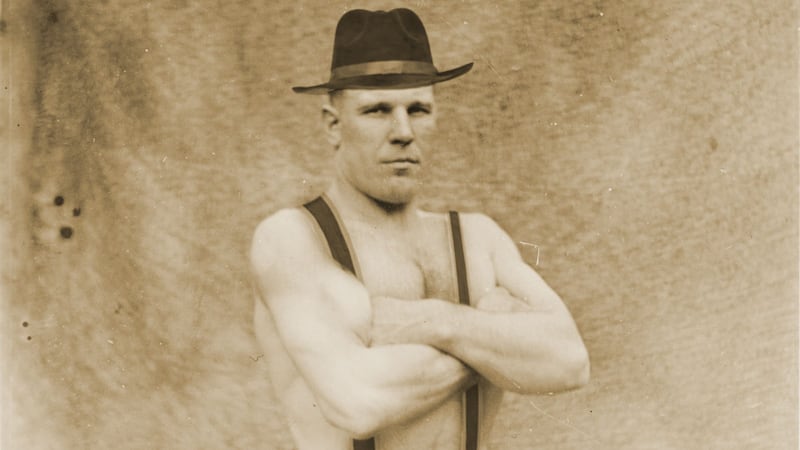Our city is being slowly strangled to death by the flexing hands and tendons of arriving California transplants, their muscular fingers locked at 10 and 2 around Old Portland's neck. More and more cars are arriving here daily. Our ancestors arrived here years ago because they desired the quiet solitude that only the Pacific Northwest could offer. Portland was never meant to be a crowded city, yet it is becoming so.
Always, though, there has been a resistance to that growth—men and women who stood up to those bullying transplants who would come here and live beside them, despite being asked not to. One such early hero was known as "the Big German."
In the autumn of 1900, at the northern end of Union Avenue, there lived a man identified as the Big German. According to publisher reports in the then-daily newspaper The Oregonian, his man was so easily infuriated by passersby that he determined something needed to be done about it. He was antagonized by bicyclists especially, so much so that he came up with a plan to hide next to the road for much of the day, waiting for any unsuspecting cyclist who had the misfortune of passing through the area. Whenever one did, he would pop up from his spot with a mighty roar and attempt to startle them into the gutter.
If successful, the fallen cyclist was his captive audience and he would berate them for however long he felt was necessary to make his point—that they should not be there, that Portland was a place for men like him, a German immigrant who did not ride a bicycle. The Big German believed that by consistent dedication to his plan, all of Portland's cyclists would eventually be convinced that Union Avenue wasn't worth the hassle.
How did the Big German become such an avid bicycle-hater in the first place? Unfortunately, there is no hard evidence, but fortunately I am an esteemed historian and accordingly it is my job to insert colorful details where there are none. Let us say then that the Big German's wife was murdered by a masked villain who narrowly escaped on a bicycle—or perhaps, more poignantly, the Big German harbored painful memories of his estranged wife waving goodbye to him while seated on the handlebars of a bicycle being pedaled away by another man.
After numerous attacks on unassuming cyclists, news of the Big German of Union Avenue spread. The cyclists, however, refused to be intimidated and vowed to continue riding on Union Avenue. Capitulating to the Big German would only lead to further harassment from other large bicycle-hating men of various ethnicities. So instead, they formulated a plan to teach the Big German a lesson.
Knowing the size and ability of the Big German, the cyclists went to boxing gyms in the area scouting for talent. They hired an amateur pugilist who was not quite as big as the German but made up for it with excellent dodging ability. They dubbed this man the Agile Swede, and waited for the day they would send him to the northernmost part of Union Avenue to meet the Big German.
TO BE CONTINUED…
